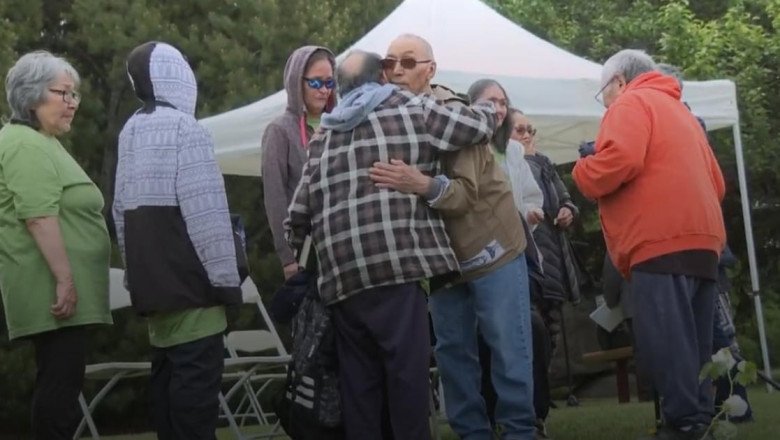
views
The last time Allen Kudlak saw his father Jacob was in August 1965. The pair hugged each other goodbye, then Allen boarded a float plane that brought him to residential school.
After 60 years, he’s finally had the chance to reunite with his father, who’s buried near the Charles Camsell Hospital in Edmonton.
Kudlak is part of a delegation of Nunavummiut this week who visited the hospital where, for decades, thousands of Indigenous people were sent for treatment during the tuberculosis epidemic that peaked from the 1940s to 1960s. During those years, some made it home; many, like Jacob, did not.
Nunavut Tunngavik Inc. brought 49 Inuit from Nunavut’s Kitikmeot region to the site as part of the Nanilavut initiative — a federal project dedicated to creating resources for those impacted by the epidemic. That includes a database of Inuit who underwent medical treatment at the time, commemorative events, monuments and compassionate travel for family members. Nanilavut, an Inuktitut word, translates to “let’s find them.”
Kudlak brought some flowers from home so his father can have a piece of Nunavut with him at his resting place. He said it’s hard to explain the feeling of relief and closure that seeing his father’s grave site brings, but he feels lighter.
“I will feel better, knowing,” he said. “I’ll be going home knowing where he’s resting.”
Junna Ehaloak, another delegate, said she feels similar relief finding her grandfather’s grave site. She said her own father spent most of his life not knowing where his father was buried, and he died wondering.
“It’s a great relief to know,” she said. “My dad is probably full of smiles up in heaven.”
Karen Nanook said that proof and acknowledgment of what families experienced is why the Nanilavut initiative is important.
Nanook, originally from Taloyoak, spent much of her life researching the hospital where her mother spent part of her childhood and where her uncle is buried. She said she hasn’t always found clear information about what happened there, and the information she can find is sometimes incorrect — like her late uncle’s name, which she said was misspelled in online records.
She said seeing the site first-hand and having a record of those impacted by the epidemic helps her face her family’s past.
“The way [my family] handled losing their loved ones is never to speak about it,” she said. “Now … they can come here and talk about their loved ones that died of TB.”
The delegates arrived over the weekend and spent Tuesday visiting the site of the former hospital and the nearby cemetery where some patients were buried. On Wednesday, delegates participated in a memorial banquet and healing circle before a closing banquet brought everyone together.
https://wol.com/a-great-relief-to-know-nunavummiut-remember-loved-ones-during-visit-to-charles-camsell-hospital/





















Comments
0 comment